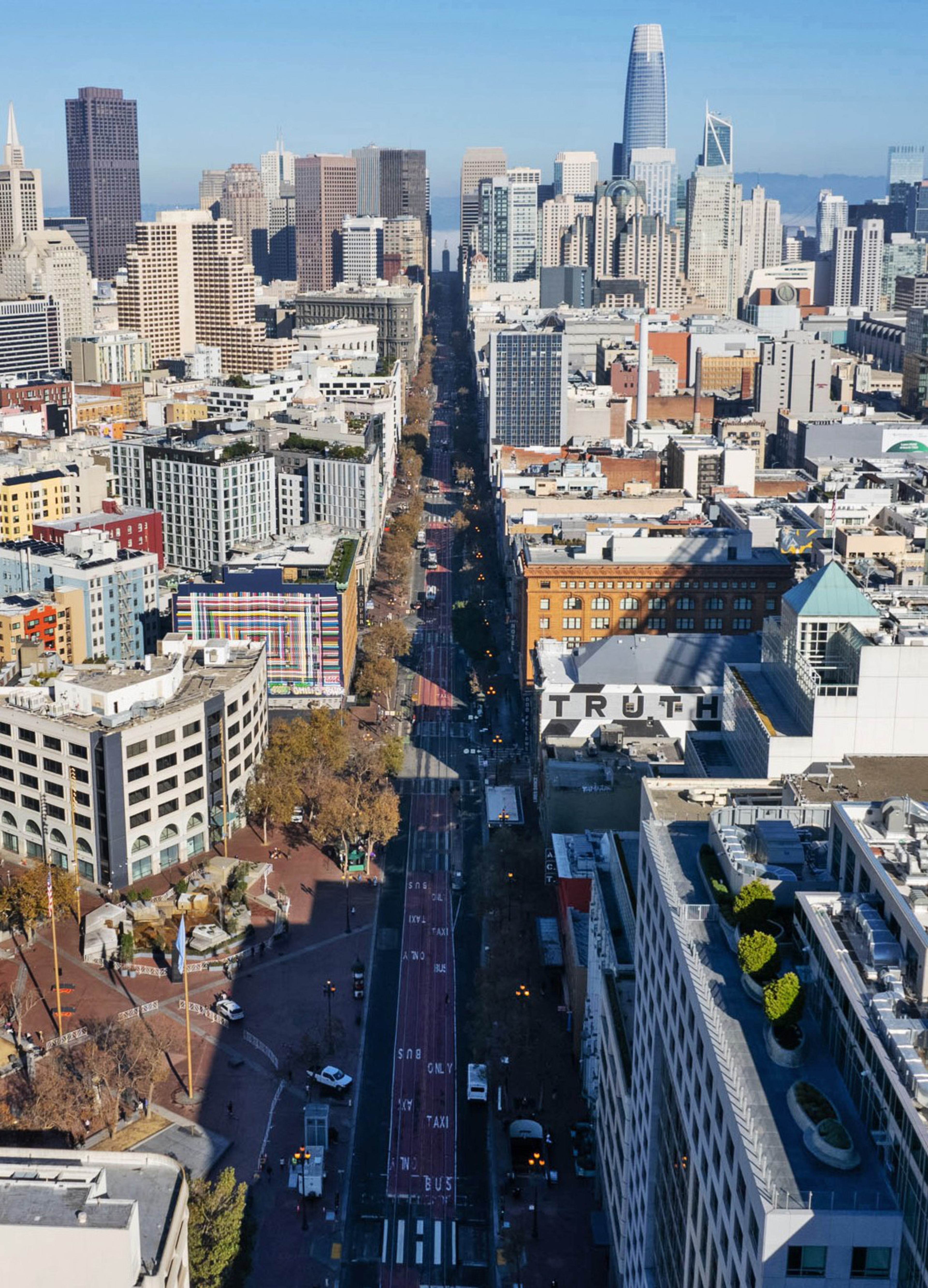John Jensen, a veteran commercial real estate broker with Colliers, found himself last week speaking to a room full of San Francisco real estate types.
“The roads of Mid-Market are paved with gold …” he began.
“URINE!!!” a heckler interjected before Jensen could complete his thought. A smattering of chuckles and groans followed. He’s used to the sentiment by now.
Jensen’s name is displayed prominently on a giant “For Lease” sign tacked on a vacant office tower that has become synonymous with the Mid-Market neighborhood’s post-pandemic struggles.
Located at 995 Market St., the 16-story building was recently valued in a foreclosure auction at a mere $6.5 million, just pennies on the dollar (opens in new tab) compared with the $62 million price tag paid for it in 2016.

Back then, a special tax break helped attract a wave of tech companies to Mid-Market—most notably Twitter, which went on to occupy a nearby vacant wholesale furniture store. Buildings like 995 Market, which had been languishing for years, benefited from the spillover.
During those heady days, Burning Man parent company Black Rock City chose to make the rehabbed property its home before an $18 million renovation attracted WeWork, which leased the entire building prior to its 2021 departure.
Kyle Kovac, a broker at real estate firm CBRE, arranged the previous sale for 995 Market back in 2016, helping the owners triple their initial investment. Even then, putting capital into Mid-Market was a risky bet on a neighborhood recovering in fits and starts after decades of neglect.
“Buyers are still using [the 2016 deal] as a case study,” Kovac said. “But this time around, the street conditions are worse, and we have a lot more available office space than before.”
Offices in Mid-Market are 46% vacant, according to CBRE Research. By comparison, San Francisco overall is experiencing a vacancy rate of 36.7%.
Fewer tenants beget fewer workers beget a neighborhood in freefall. A Whole Foods came and went after only a year in business. The Warfield building—which was the poster child of a Downtown office being turned into homes—is in foreclosure. Several buildings along the corridor are being shopped around at discounts of more than 70%.
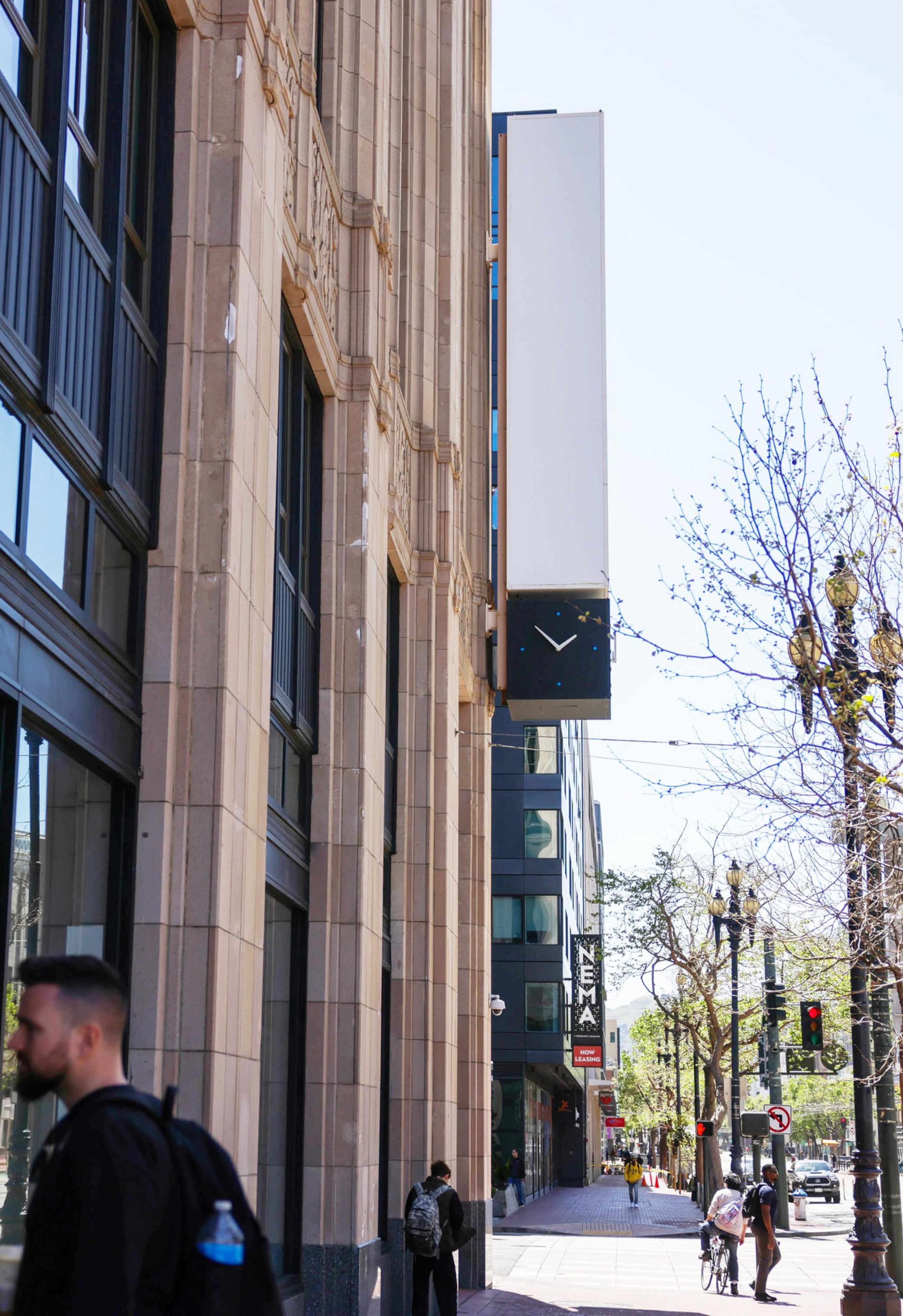
Brokers report that it’s near-impossible to find new tenants to help fill those empty buildings on the doorstep of the city’s drug crisis at nearly any cost, rendering the neighborhood largely an office dead zone. But Mid-Market is inhabited by a true San Francisco community still striving and struggling to define itself in an era where the hype wave has receded and the startups have gone.
“It’d be disingenuous to say that we don’t have some major issues,” said Fernando Pujals, deputy director of the Mid-Market Business Association and Foundation. “But Mid-Market really is the beating heart of San Francisco if you shift your focus to the diverse residents and businesses that are still here.”
‘Light at the end of the tunnel’
The influx of tech companies during the previous boom brought with it a series of building overhauls and new construction that visually remade the roughly five-block stretch of Market Street.
“Mid-Market has never looked better from an architectural standpoint,” said Jensen, who has worked in the neighborhood for over 30 years, “Generational fortunes will be made here again, but the street conditions need some improvement.”
To accommodate the growth, developers raced to build new apartment buildings in a mini housing boom for the neighborhood. Shiny glass towers like the office-to-residential conversion at 100 Van Ness, the NEMA and Trinity Place promised to house the thousands of the area’s new residents in sleek accommodations.
San Francisco developer Olympic Residential Group broke ground on the Prism, a 193-unit complex at 1028 Market St., at the tail end of that cycle. The building opened in 2022.


From the rooftop of the 11-story building at 1028 Market St., one can see largely silent office buildings to the west and Ikea’s growing presence to the east.
“If there wasn’t a pandemic, we would have walked right over to Zendesk and advertised this place to their workers,” said Adam Tetenbaum, a senior vice president with Prism’s developer Olympic Residential Group.
Now, absent thousands of tech workers, the team at the Prism said they’re “leaning into what makes the neighborhood great,” his colleague Dan Deibel said. That means, playing up its arts, culture, dining and transit-accessibility as amenities to attract residents.
Like their counterparts in office development, the Olympic team is still adjusting to a rental market that is softer than their initial plans, Deibel said. Initial leasing at the Prism was as high as 95% in the first year, but with an influx of similar properties nearby, the competition to hold onto and attract new tenants is fiercer than ever.
“We’re keeping track of every positive development in the neighborhood and telling our residents about it,” Tetenbaum said. “We are here and we want to be good members of the community.”
Dolmen Property Group has owned the historic Hibernia Bank Building since 2008, a block away from the Prism. The landmark building, which was vacant for decades before it was purchased, recently celebrated its 132nd birthday.
In those early years, the group planned to convert the space into an office building. But after an intensive seismic retrofitting and renovation took more than seven years to complete, the company pivoted and opened a private events business at the site in late 2019.
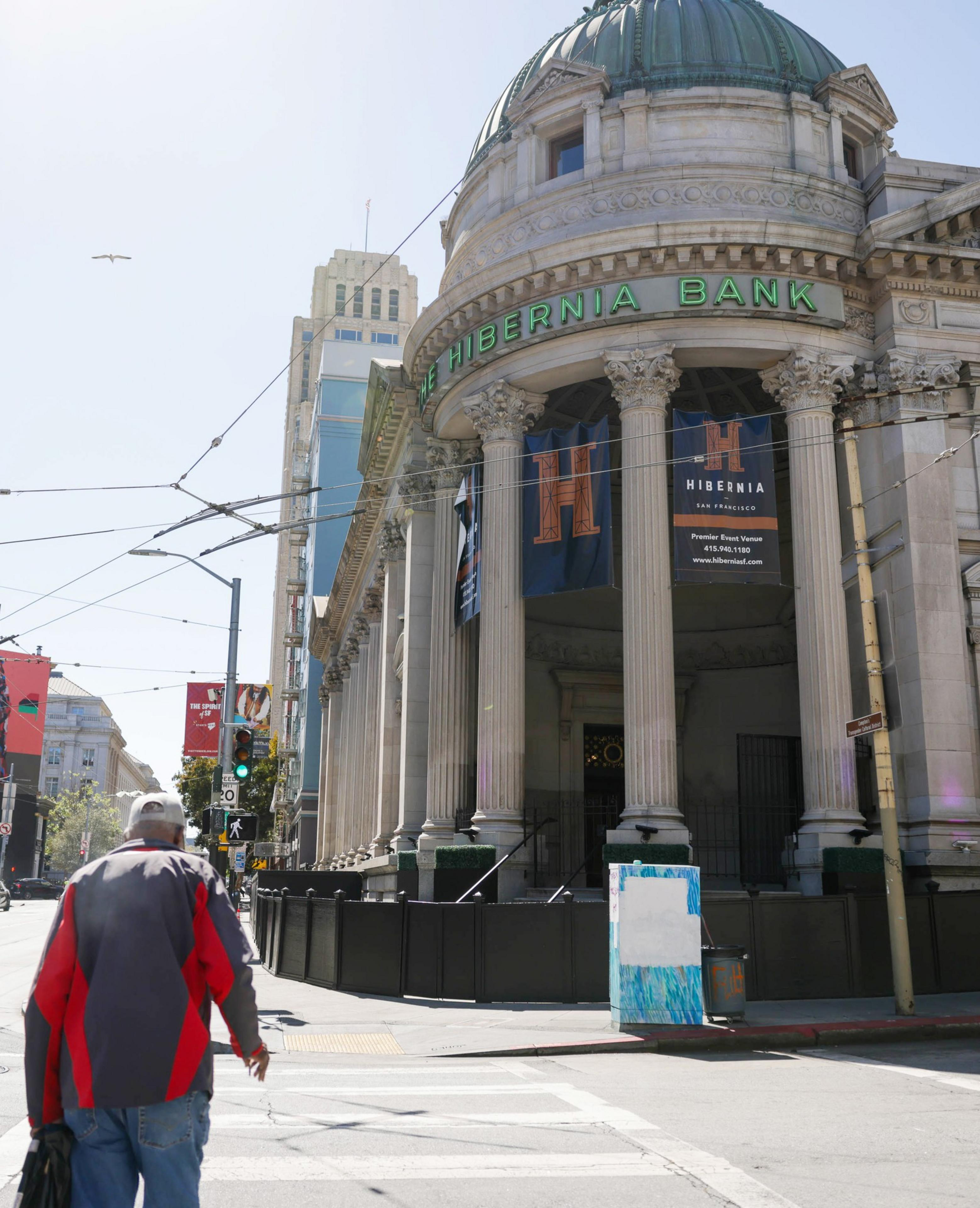
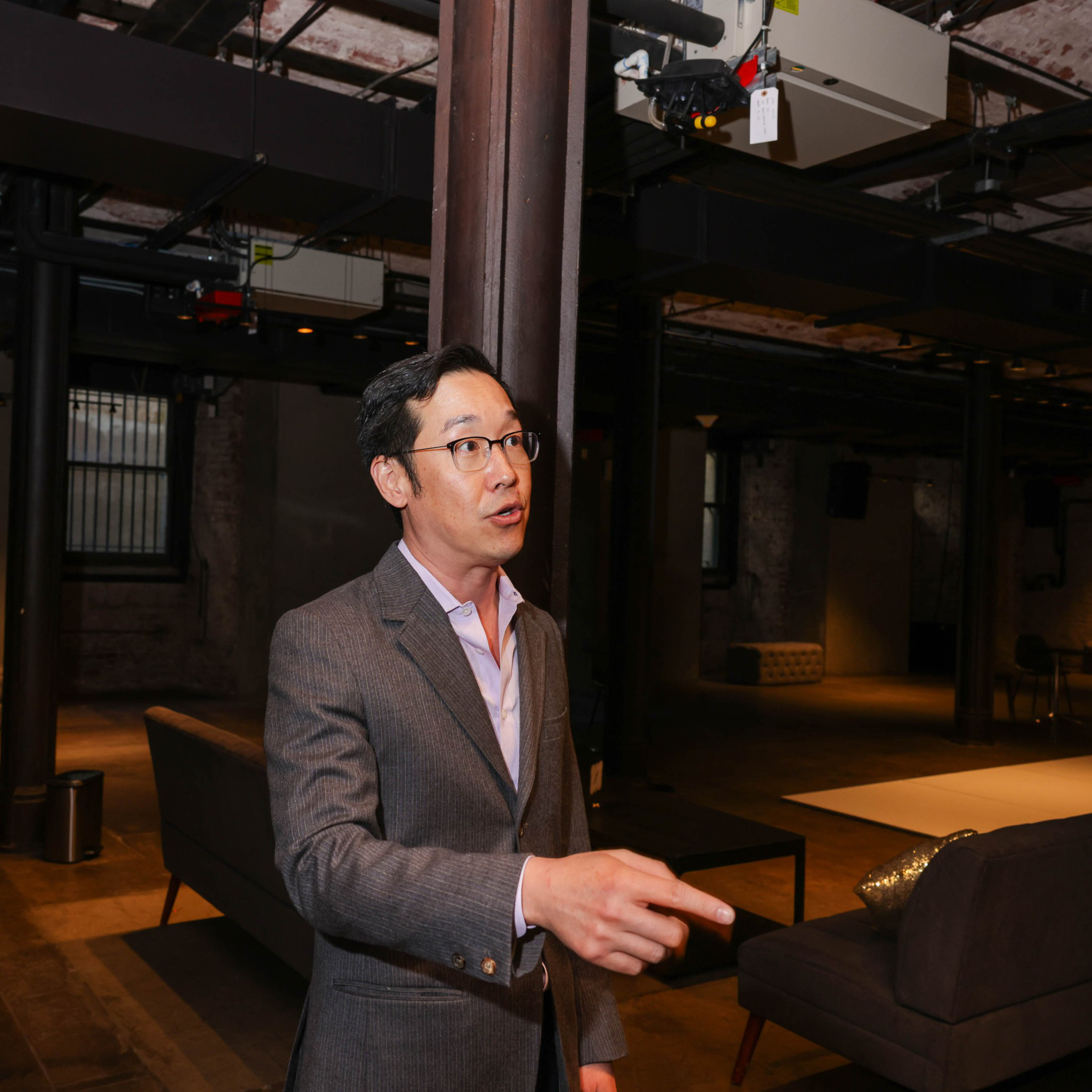
Now called the Hibernia SF, the venue hosts weddings, corporate events, shows and other live programming, said Chief Revenue Officer Terry Lim. The original bank vault now serves as a liquor cabinet, and the main lobby with its grand Tiffany stained-glass ceilings hosts weekly yoga classes.
“Especially in this neighborhood, we’re hyper-focused on executing a great experience for our guests,” Lim said. “A lot of them, whether fair or not, have concerns about the city. We don’t shy away from it. But we absolutely can’t blow it if they’re choosing to come here over other places.”
Hibernia SF has benefitted from return of conventions to San Francisco since reopening last year, Lim said, hosting up to three to four events a week. The domed main hall with its original marble design evokes a sense of grand scale reminiscent of nearby City Hall, one of the city’s most popular wedding venues. While the basement and upstairs suites lend themselves to other flexible uses.
With talks of potential conversions of unused real estate dominating the discourse in the city, Lim said only those playing “the long game” are the ones willing to spend the money and time to see projects through.
“We’ve been here for 17 years,” he said. “We wouldn’t be doing this if we didn’t see the light at the end of the tunnel.”
Why stay?
Based on the packed dining room at SAMS American Eatery during a recent weekday dinner service, you wouldn’t know Mid-Market was struggling.
On a recent Tuesday night, just a block away from Twitter’s headquarters, guests flowed into the longtime Market Street establishment to munch on Korean fried chicken, giant burgers and bacon-wrapped meatloaf before the 7:30 pm showing of the musical Funny Girl at the nearby Orpheum Theatre.
Jeannie Kim, who has owned and operated the restaurant for over 18 years, is candid about the neighborhood’s struggles, but she speaks glowingly about what it has been able to provide her family and staff, many of whom have been with her since the beginning.
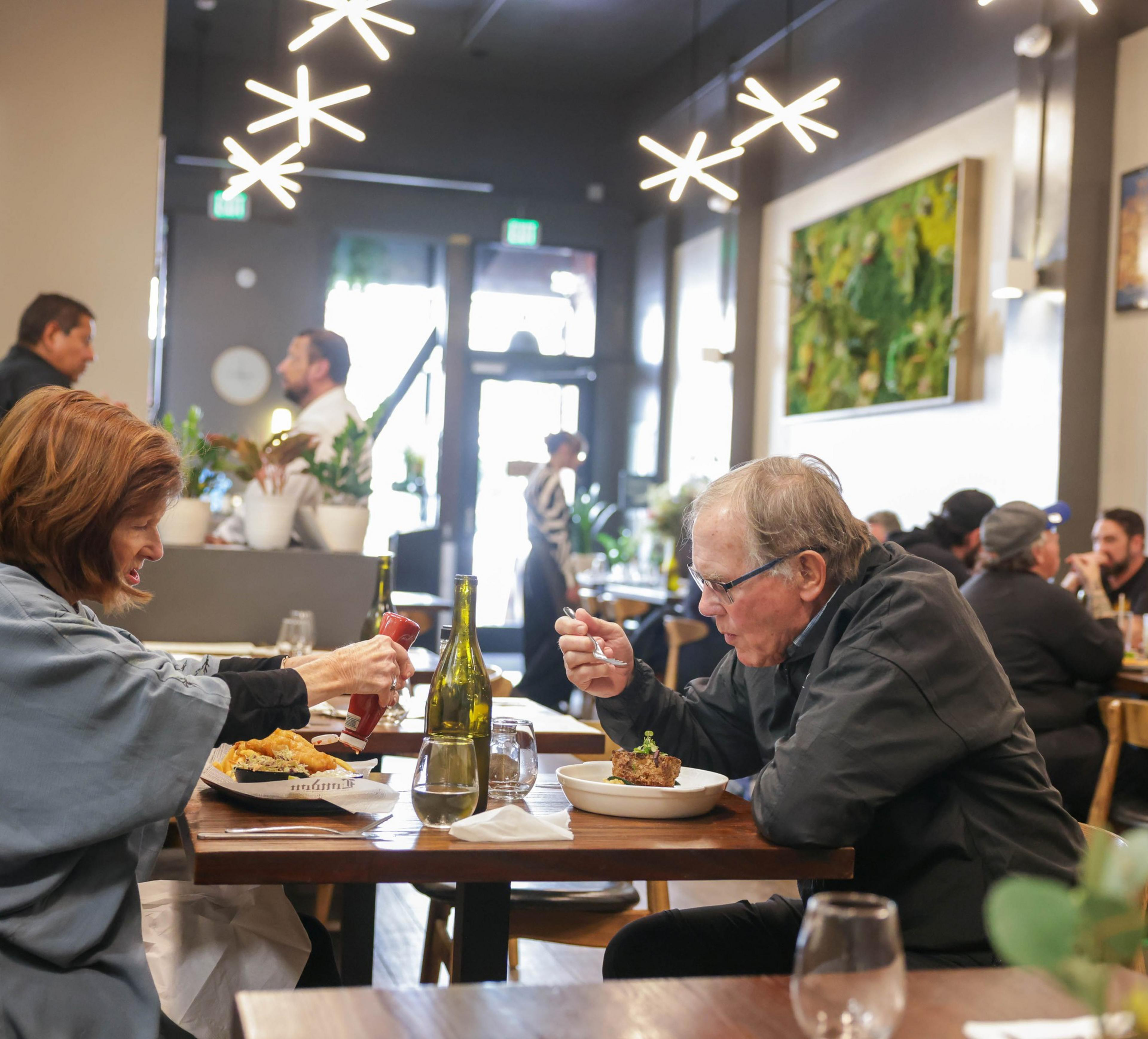
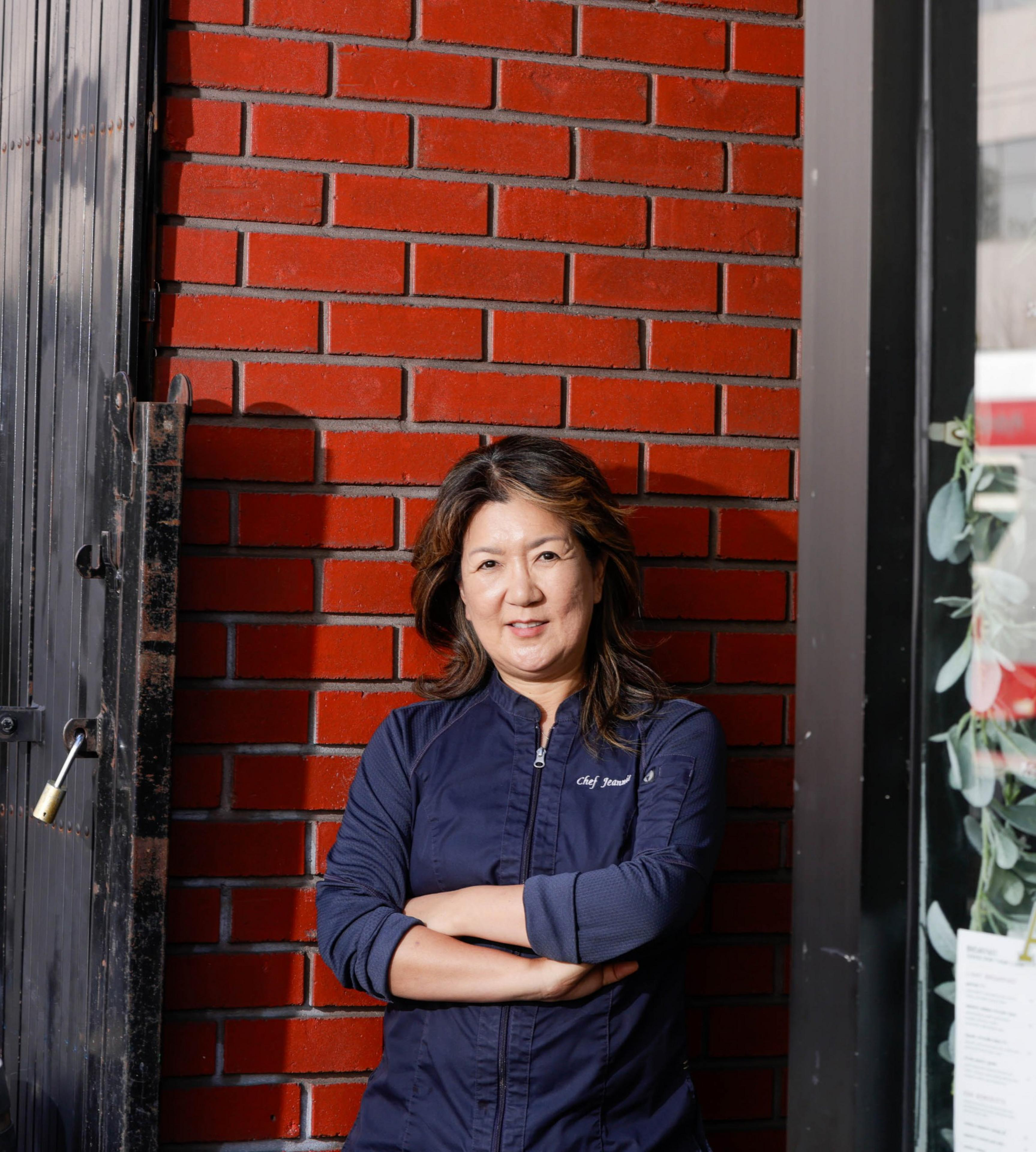
The first iteration of her restaurant, Sam’s Diner, opened when Mid-Market was in a similarly precarious situation beset with crime and vacancies, she said. But the arrival of the hit musical Wicked, which ran at the Orpheum from 2009 to 2011, propelled Sam’s to new heights as Kim extended operating hours through dinner and obtained a beer and wine license.
“People remember the feeling they get from places,” Kim said. “Sam’s became a place where you come for comfort.”
In 2017, she doubled down on the neighborhood and opened Fermentation Lab next door with Jakub Przybyszewski, who started as a server at Sam’s. The gastropub was targeted toward the area’s new office workers who needed a spot for after-work happy hours. Last year, the pair branched out and opened up another location in Japantown.
But the triple blow of losing tech workers, government employees and tourists during the pandemic has been devastating for Mid-Market, Kim said. Sales fell precipitously, but the bills never stopped coming.
“Small businesses are all playing a waiting game right now,” she said. “We keep telling ourselves that things are going to get better, but I can’t tell you for sure that we’ll be able to stay open through next year.”
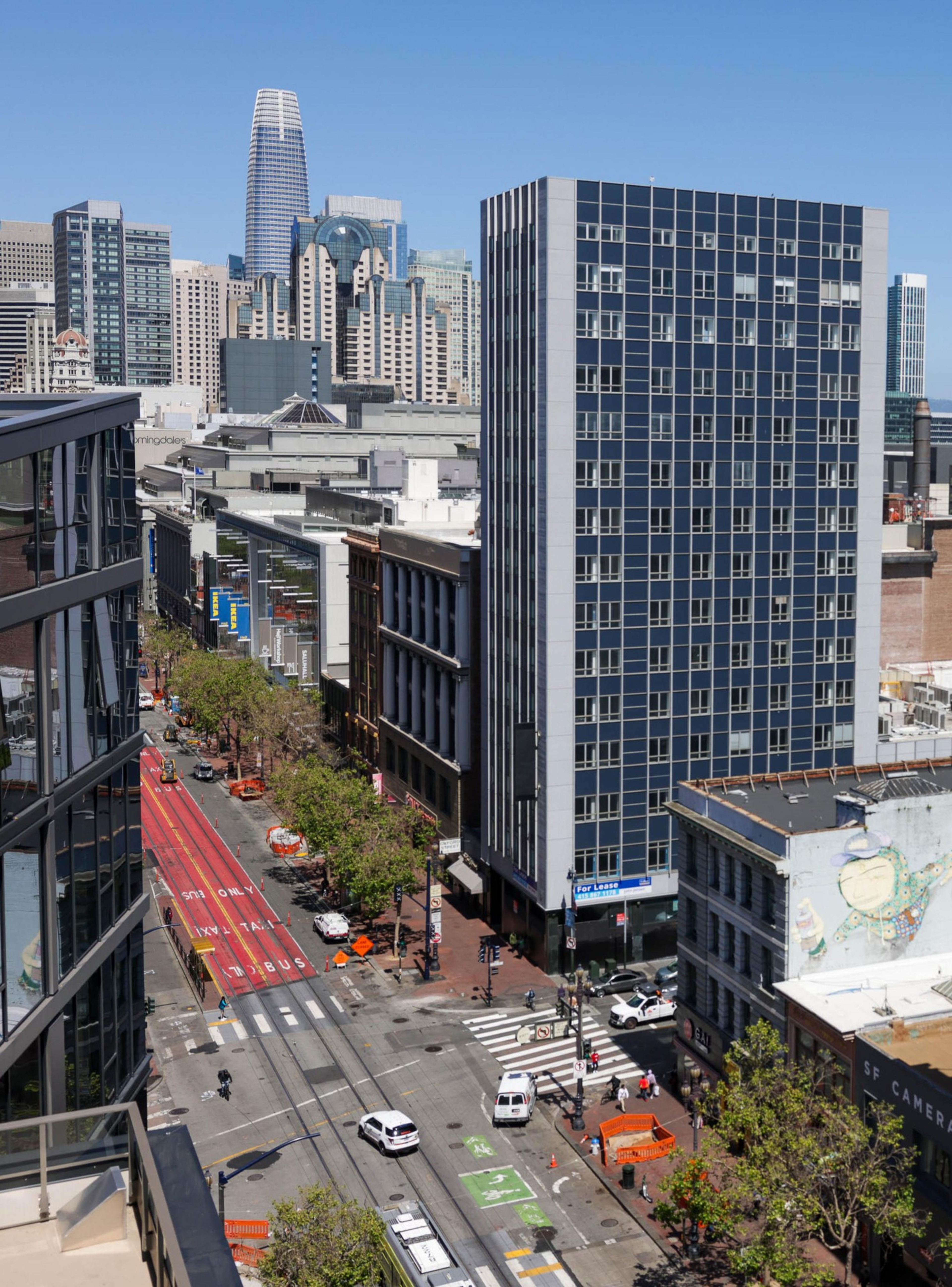

Since return-to-office is out of her control, Kim is focused on things she can influence, such as lobbying the San Francisco Municipal Transportation Agency to reverse its car-free policy on Market Street, which she said has only served to reduce the neighborhood’s visibility and emptied the streetscape, inviting criminal behavior to fill the void.
At this point, no one would blame Kim if she folded up shop. In fact, many of her fellow business owners have suggested it. On paper, she’s had more than a good run. Her three kids are all through college and the area is clearly in the midst of a crisis with no easy out.
So why keep commuting an hour or more every day from her home in Concord to go into a seemingly losing battle? After all, bigger players in the real estate industry have walked away for less.
“It can’t always be about getting your investment back,” Kim said. “You gotta have faith in people who gave us years of their lives and the relationships you made along the way. Because if not, what else do you have?”
